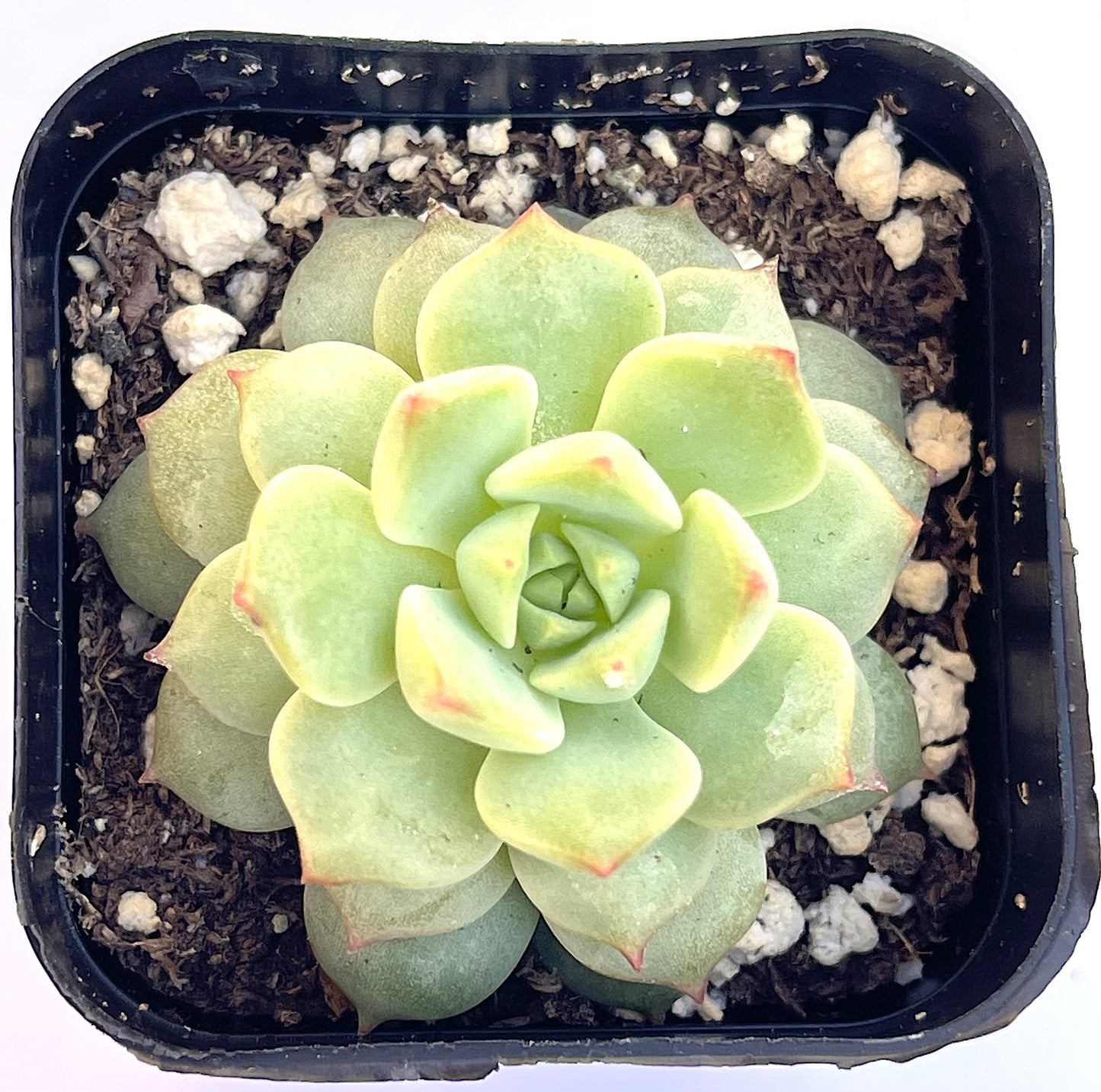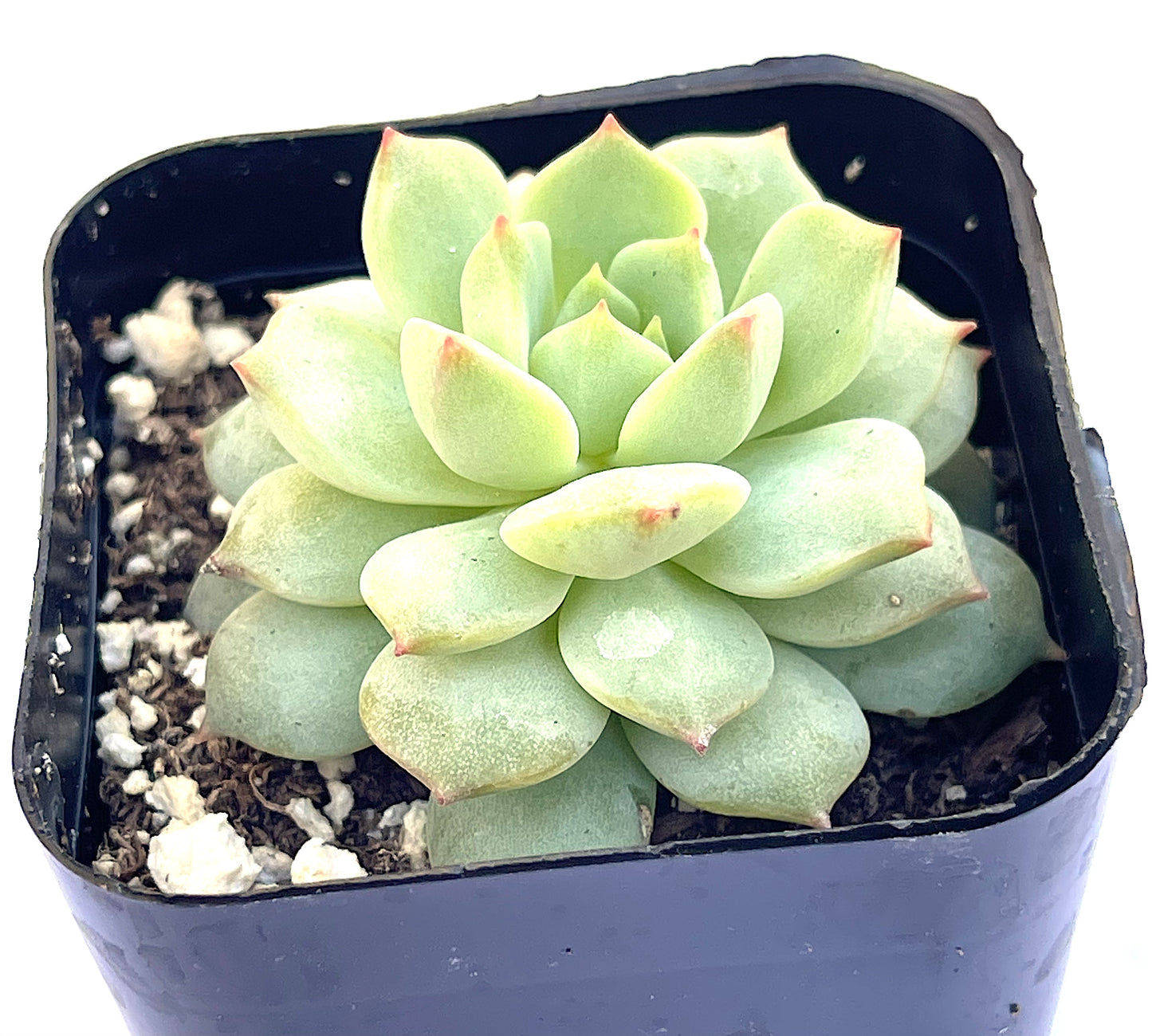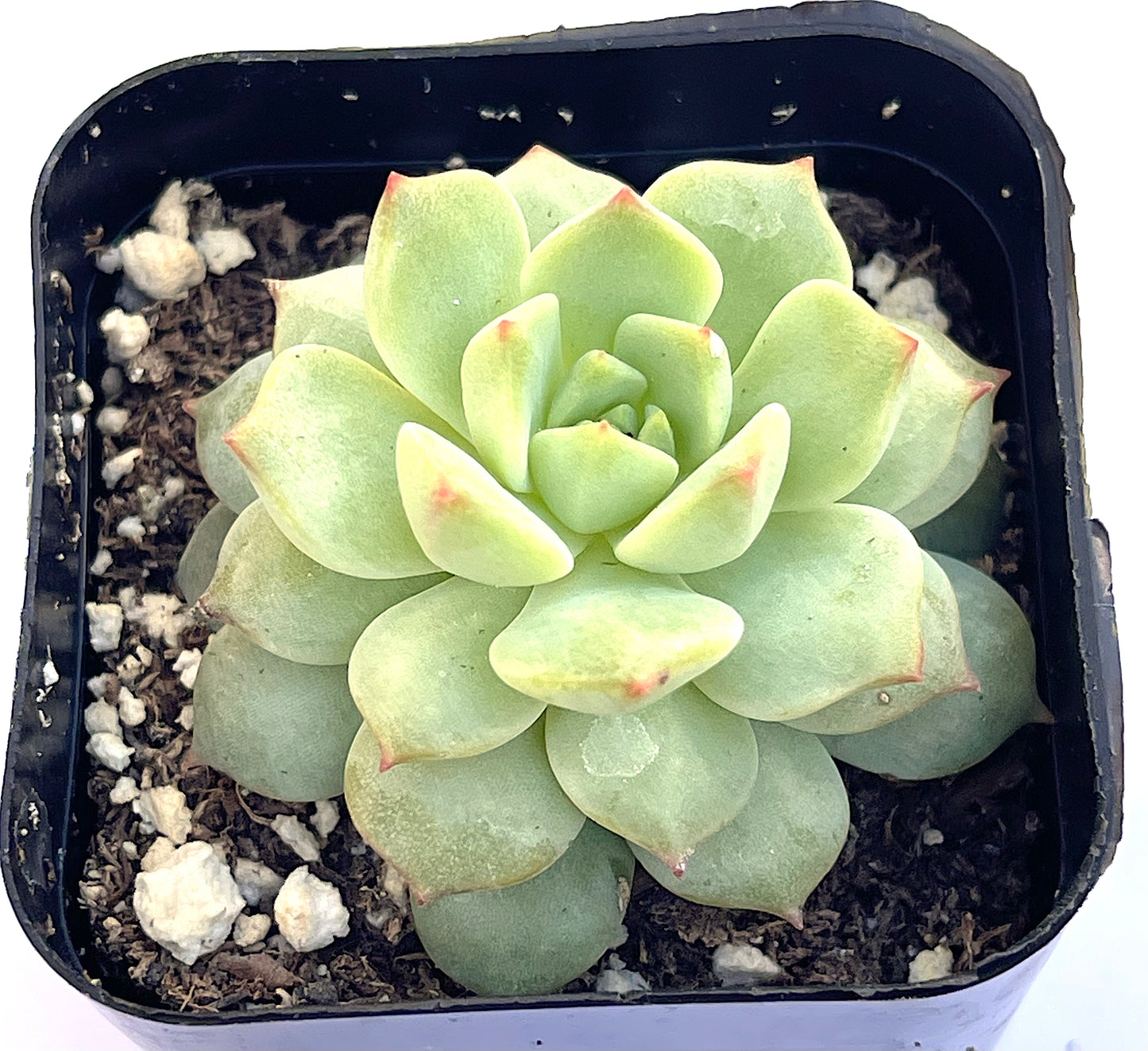1
/
of
4
SEAH
Echeveria - Painted Lady
Echeveria - Painted Lady
Regular price
$4.99 USD
Regular price
$7.99 USD
Sale price
$4.99 USD
Unit price
/
per
Couldn't load pickup availability
Echeveria 'Painted Lady' is a beautiful and popular succulent known for its distinctive appearance and easy-care nature. Here’s a detailed overview of its morphological characteristics, growth habits, maintenance points, and reproduction method:
Morphological Characteristics
- Leaves: Echeveria 'Painted Lady' features rosettes of fleshy, spoon-shaped leaves that are a pale green with pink to red tips. The leaves may also display beautiful variegation or painted patterns, which can include shades of yellow, pink, and red, contributing to its name.
- Size: The plant typically forms compact rosettes that can grow up to 15 cm (6 inches) in diameter. The rosettes grow singularly or can form small clusters with time.
- Flowers: This echeveria variety produces bell-shaped pink to coral flowers on tall, arching inflorescences during spring or early summer, adding to its ornamental value.
Growth Habits
- Light: Prefers bright, indirect sunlight or partial shade. Too much direct sunlight can scorch the leaves, while too little light can cause the rosettes to stretch out (etiolate).
- Temperature: It thrives in warm environments but is not frost-tolerant. It should be protected from temperatures below 0°C (32°F).
- Water: Water when the soil is completely dry. Overwatering can lead to root rot, so ensure the soil dries out between watering sessions.
Maintenance Points
- Soil: Requires well-draining soil. A cactus or succulent mix is ideal.
- Pot: Use a pot with drainage holes to prevent water accumulation.
- Fertilizer: During the growing season (spring and summer), you can apply a diluted cactus or succulent fertilizer once a month to encourage growth.
- Pruning: Generally not required, but dead or damaged leaves should be removed to keep the plant healthy and attractive.
Reproduction Method
- Offsets: Echeveria 'Painted Lady' commonly produces offsets around the base of the main rosette. These can be carefully separated and replanted once they have formed their own roots.
- Leaf cuttings: Leaves can be gently twisted off the rosette and left to callous for a few days. Once calloused, place the leaf on top of well-draining soil until roots and a new rosette form.
- Seeds: Although less common, it is possible to grow Echeveria 'Painted Lady' from seeds. Sow seeds in a well-draining medium and keep moist until germination occurs.
Echeveria 'Painted Lady' is highly valued in succulent collections for its vibrant coloring and the ornamental shapes of its leaves and flowers. Its low-maintenance requirements make it a perfect choice for beginners and those looking to add a splash of color to their indoor or outdoor succulent gardens.
Share







